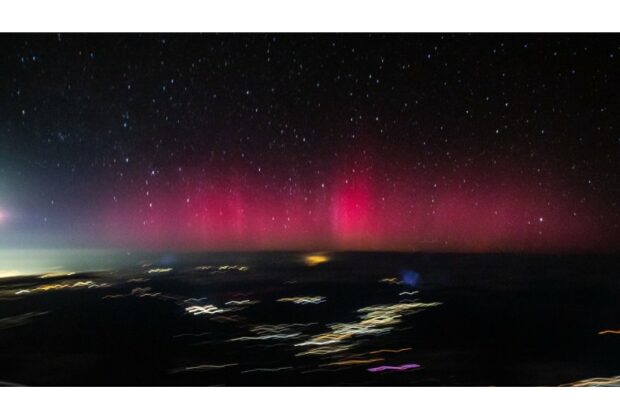At least two powerful solar flares from the Sun this week could disrupt radio communications and trigger vivid displays of the Northern Lights over the northern United States. The flares sent plasma hurtling toward Earth.
A coronal mass ejection (CME) that left on Friday was observed by satellites monitoring the Sun, leading NOAA’s Space Weather Prediction Center (SWPC) to issue a Geomagnetic Storm Watch on Saturday. On Sunday and Monday, the effects of the plasma outburst on Earth are predicted to be at their strongest. The SWPC issued a moderate Level 2 watch on Monday on a 5-point scale.
The Northern and Southern lights are caused by auroras, which happen when charged particles from the Sun contact with the Earth’s atmosphere.
The appearance of Aurora lights farther from Earth’s poles can be attributed to intense space weather occurrences. The Northern Lights could be seen on Sunday night from New York to Idaho, according to SWPC’s aurora forecast.
The SWPC reported that it has been monitoring the activity of a very active region of the Sun that has been producing powerful and moderate solar flares since late April, in addition to the possibility that the CME would produce aurora lighting displays.
The SWPC reports that during the course of the weekend, several intense M-class and X-class flares were observed. The strongest flares are X-class, with M-class being the next most intense.
Electromagnetic radiation bursts known as solar flares can result in high-frequency radio blackouts and endanger space launches and spacecraft in Earth’s orbit. Since these energetic particles do not penetrate far enough into Earth’s atmosphere to have an impact on the general population, most people do not need to worry.
According to SWPC, between Sunday and Tuesday, these flares may momentarily interfere with high-frequency radio transmissions.
Solar flares are frequently linked to sunspot groupings and usually occur in the Sun’s active areas. The Sun’s 3663 region is the source of the flare activity.
“Region 3663 is the largest and most complex sunspot region on the disk, and has produced a total of 14 M-flares and three X-flares since it emerged on April 30,” said the SWPC.
Space weather scientists from NOAA predict that this busy region will likely produce more flares throughout the next week.








